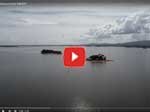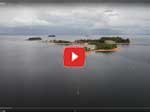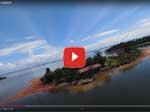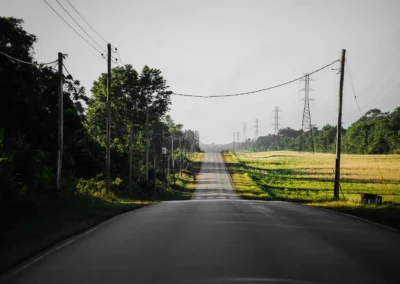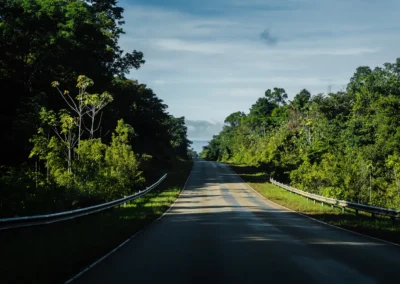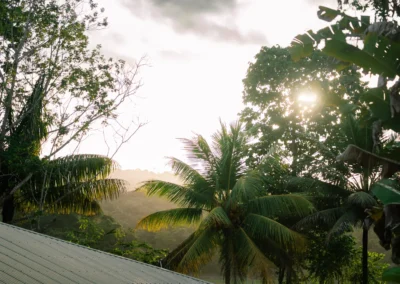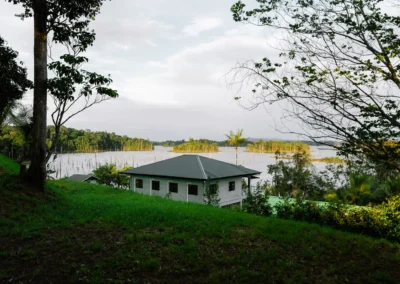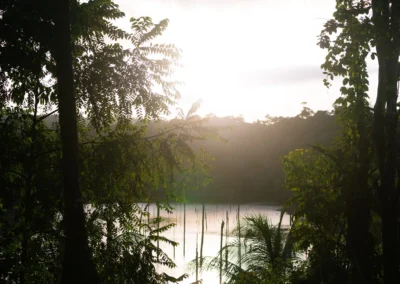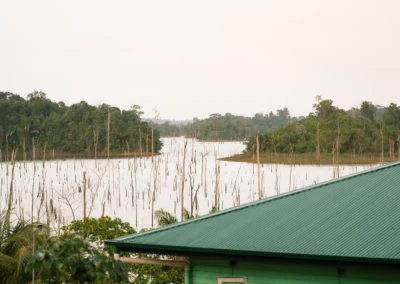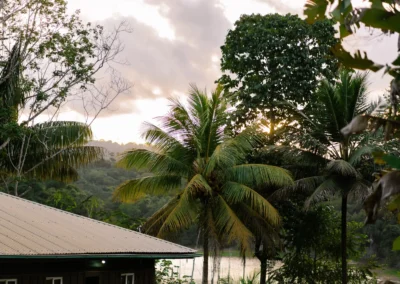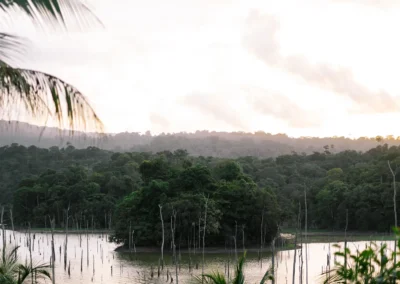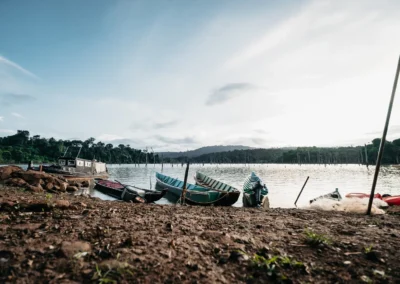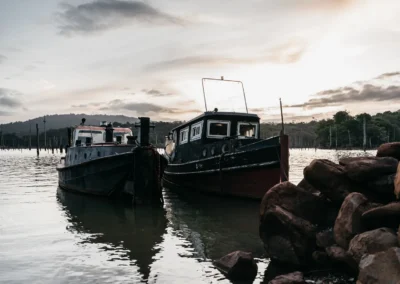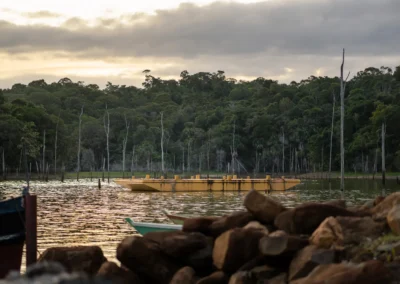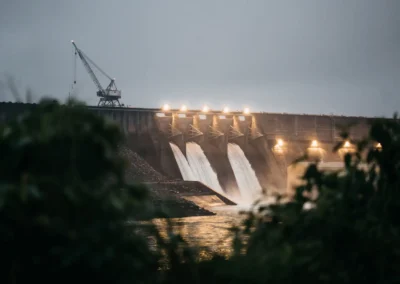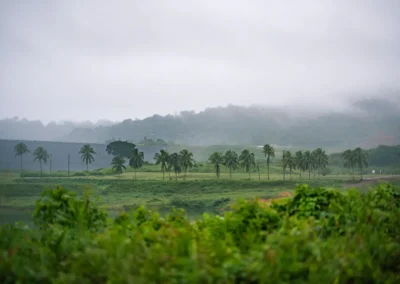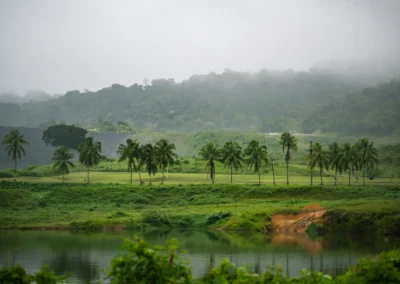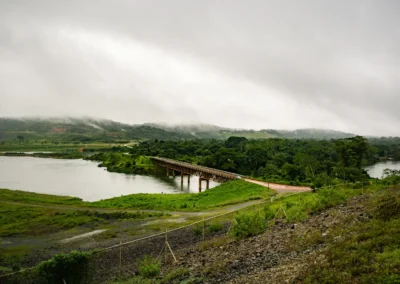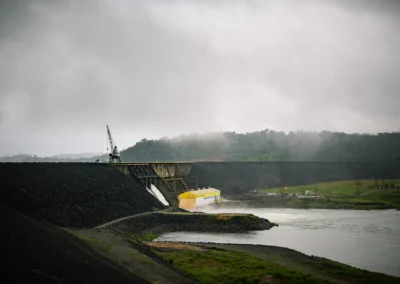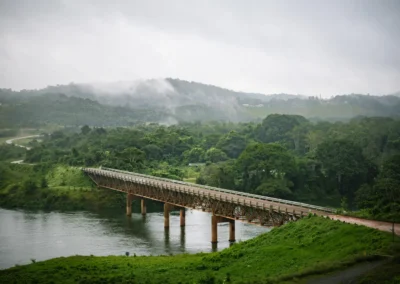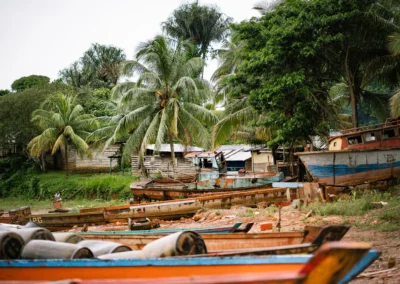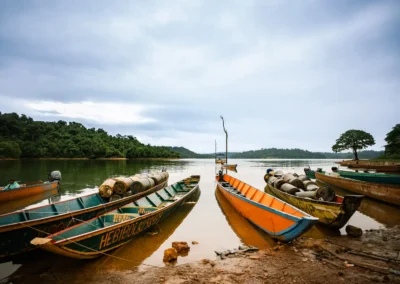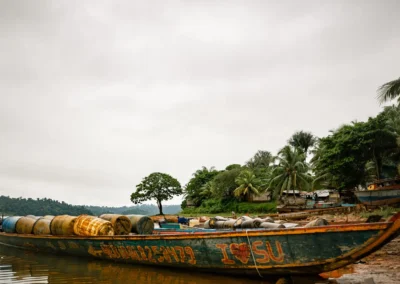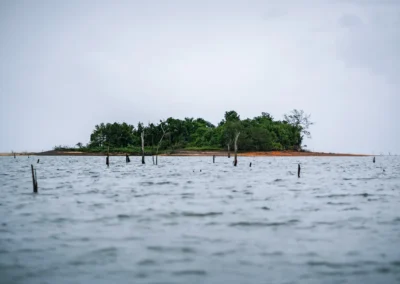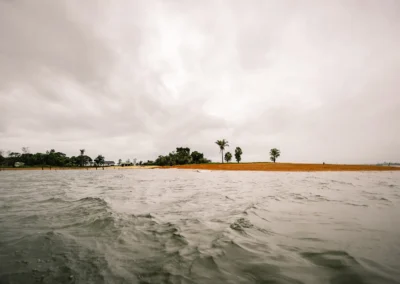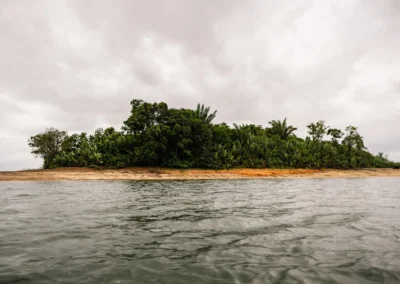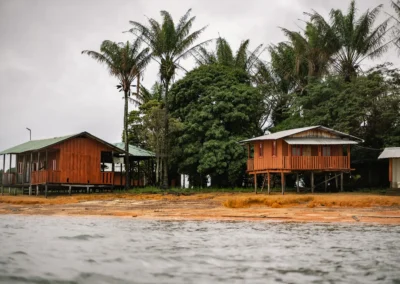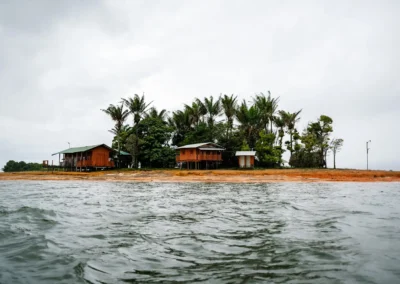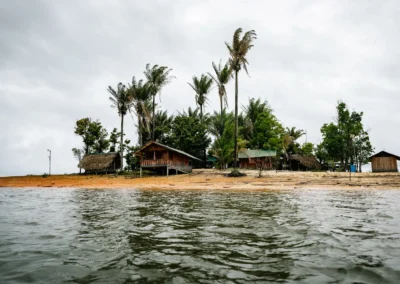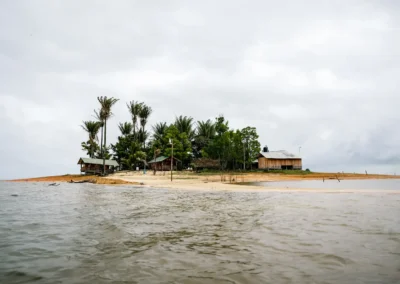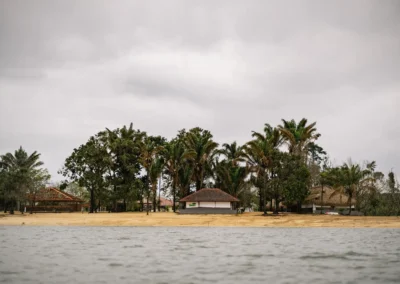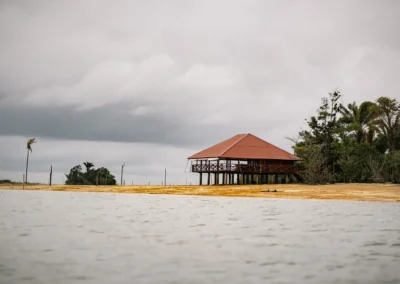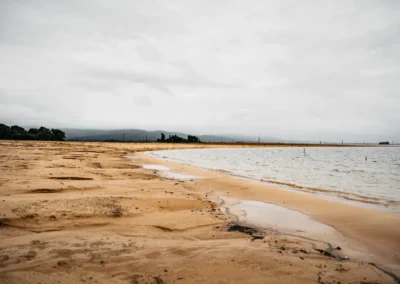BROKOPONDO
Sail on the Professor van Blommestein reservoir, also known as the Brokopondo lake, and listen to the stories that the boatmen tell about the drowned villages. These are stories about people who had to leave their residential area years before the arrival of the hydroelectric power station in 1964 and had to start all over again elsewhere in the district. Fortunately, they have retained their knowledge of the plants and their application in curing ailments.
In 1958, the Brokopondo agreement was signed between the Surinamese government and the Suriname Aluminum Company, which stipulated that a dam would be built in the area. The area (the residential area of the inhabitants) would then be flooded in order to generate electricity via the hydroelectric power station. The inhabitants were forced to settle elsewhere in the district. And so an enormous reservoir was created with a surface area of more than 1500 square kilometers.
The trees that protrude above the water are the tops of forest giants that were once in the residential area of the inhabitants. If you look at the Brokopondo lake from above in clear weather, you will see a blue mass of water, because the lake is about forty metres deep and the blue sky reflects on the clear water surface.
There are several islands on the lake where small resorts are located. Various (fishing) boat trips are offered from a number of these resorts, but also from the shore of the lake.
The most famous place in Brokopondo is the Brownsberg; a nature reserve with a surface area of 12,200 hectares and with picturesque guest houses on the plateau. The plateau offers a beautiful view of the reservoir and of course of the jungle along the mountainside.
It would be a shame not to spend the night on the mountain. In the morning you will be woken up by the powerful roar of the howler monkeys. Once you are on your way to one of the waterfalls, you will definitely encounter them; curious monkeys swinging through the trees and used to visitors, toucans and other exotic birds, beautifully coloured frogs (note that these can be poisonous), green boas, forest rabbits and if you are very quiet you can sometimes spot a deer. However, it is not wise to walk into the jungle at night, because in the morning, and not far from the houses, you often come across jaguar droppings.
Brokopondo has Brokopondo Centrum as its main town and borders the districts of Para and Sipaliwini. The district was established in 1958 and the population consists of more than 80 percent Maroons.


